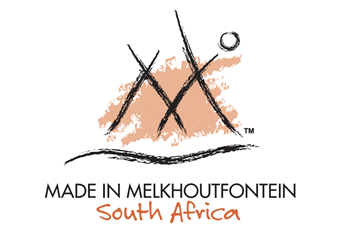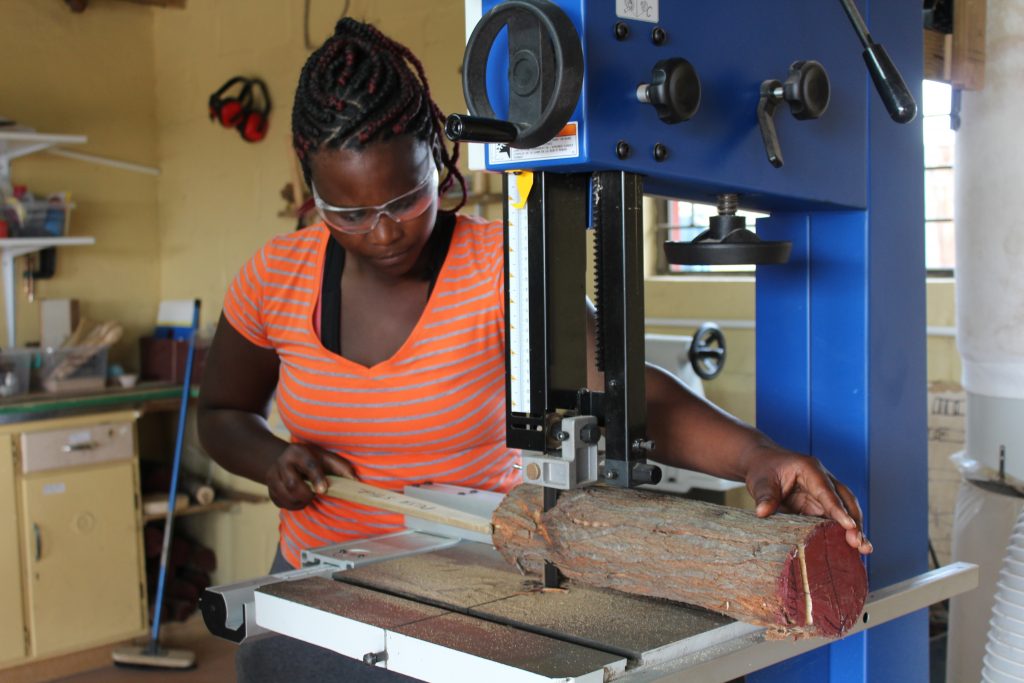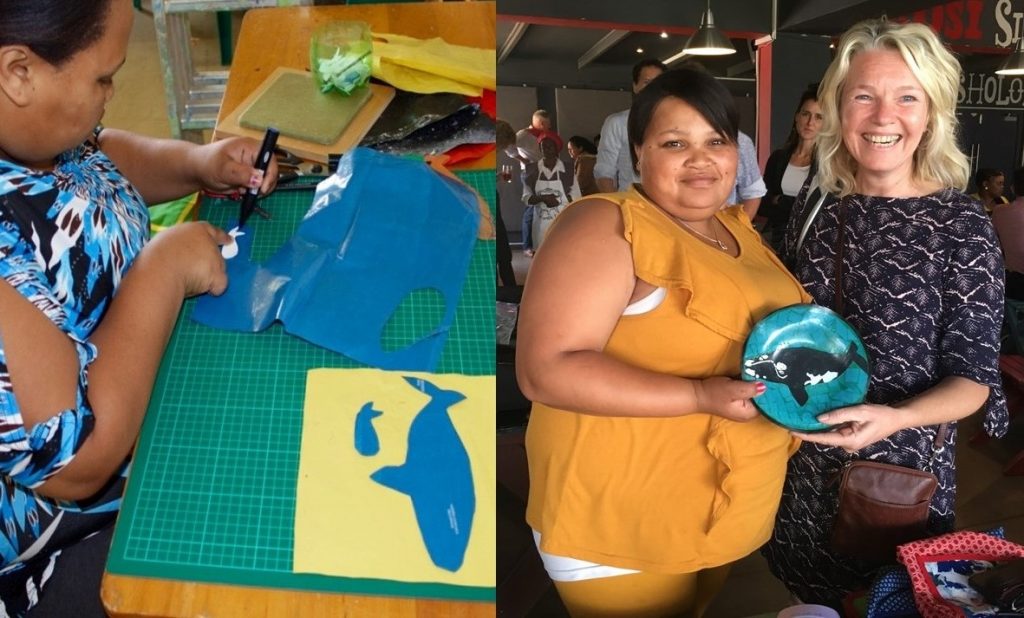


The Made in Melkhoutfontein project builds on our long-term work addressing local waste challenges, rehabilitation of indigenous fauna and flora, and enterprise development through crafting. Dreamcatcher’s founder had previously worked on local crafting projects in Melkhoutfontein setting up a crafting centre at Soeterus in 1999 – and there were also several enterprises working in different communities on the Dreamcatcher Crafting with Kamamma and Bhuti initiatives. Dreamcatcher’s vision was to establish a crafting workshop transitioning waste into a resource to address the environmental and health impacts of poor waste management whilst stimulating enterprise and socio-economic development. The ongoing ‘Made in Melkhoutfontein’ project aims to stimulate local enterprise by utilising local resources, including waste, to make crafts and products, whilst facilitating knowledge exchange and skills transfer.
Starting the project in 2015 we conducted analysis to map out available resources in the Stilbaai area including completing the first ever waste analysis in Melkhoutfontein. This was followed up with extensive engagement with the community of Melkhoutfontein to identify needs and opportunities. The work was collaboration with a team from the University of Brighton (UK) led Dr Ryan Woodard, previously Principal Lecturer and Course Leader in Waste Management and the Circular Economy, who started engaging with Dreamcatcher in 2010, and today continues to support Dreamcatcher as a volunteer.
This fed into a brief to art and design students at the University of Brighton tutored by Nick Gant, Tanya Dean and Stefano Santilli. The brief was to develop products and crafts that could be made from the resources available whilst utilising low-cost technology and processes. Students were provided with a wide range of resources including a presentation from Dreamcatcher’s founder on the rich cultural heritage of the area, fauna and flora, and available materials including waste and Acacia cyclops. Students presented back their ideas to the Melkhoutfontein community representatives to critique via video links. From this work we identified products that could be made, the tools and resources to realise these ideas into concrete actions. Thanks to the contributions of many supporters in the USA and Netherlands we raised the funds required to purchase the tools and other equipment needed. And so a new era to pioneer an outcomes based pathway to innovate waste into a resource in Melkhoutfontein, started.
Our next focus was to raise the funding to facilitate skills transfer to support the enterprises. A successful joint bid (we were one of the 29 projects funded out of 200 submissions) by Dreamcatcher South Africa NPC and the University of Brighton to the British Council Developing Inclusive and Creative Economies (DICE) programme generating to support our work. Aspiring enterprises from Melkhoutfontein were recruited and received training on waste, enterprise, health and safety, and making crafts with Acacia cyclops, plastics and textiles. The training integrated the design process and how the rich cultural heritage of the area could be inspire their craft ideas. This included fieldtrips where the aspiring enterprises could learn about the history of the area and their ancestors exhibited at the Blombos Archaeology Museum located at the Stilbaai Tourism Bureau. This was an inspiring and emotional day for all of them as none had ever visited the Bureau and were unaware of their significant ancestral past. To facilitate the training we created pop up workshops at the Dreamcatcher Home Office and Soeterus in Melkhoutfontein.
Throughout 2018 and 2019 we delivered training and support to enterprises culminating in the Christmas market which was open to the public to buy crafts produced by the enterprises.
During consultation with the enterprises they unanimously decided to affirm their history through the branding of their crafts. Working with a professional brand designer the enterprises agreed on ‘Made In Melkhoutfontein’ (now legally registered) as branding for the crafts and products, with the logo inspired by the geometric patterns and colour palette found on the ochre piece at the nearby Blombos cave.
Despite the challenges of the pandemic, a core network of enterprises continue to make crafts. This includes selling to visitors to Melkhoutfontein as well as fulfilling international orders from the Netherlands, Canada, UK and USA. In addition, enterprises have had continued tutor support from South Africa crafters and trainers including Monique and Elize. Our work has been shared globally including at events in Ghana and the Philippines, and in British Council, UK and Dutch publications.
A key reason for the success of the project was collaboration with the community, enterprises, and Dreamcatcher team who partnered with knowledgeable professional trainers with the same ethos in terms of sustainability as Dreamcatcher South Africa.
We have demonstrated that our model works. Our priority post pandemic is to establish a permanent site to host the making workshop and enterprises. The project is a key part of our wider work raising awareness and addressing waste challenges in the community – core to the Sustainable Development Goals. You can explore the project through the gallery below (click on the thumbnails to enter carousel mode).
We acknowledge the multiple funders and donors who enabled this work to be realised since 2015.